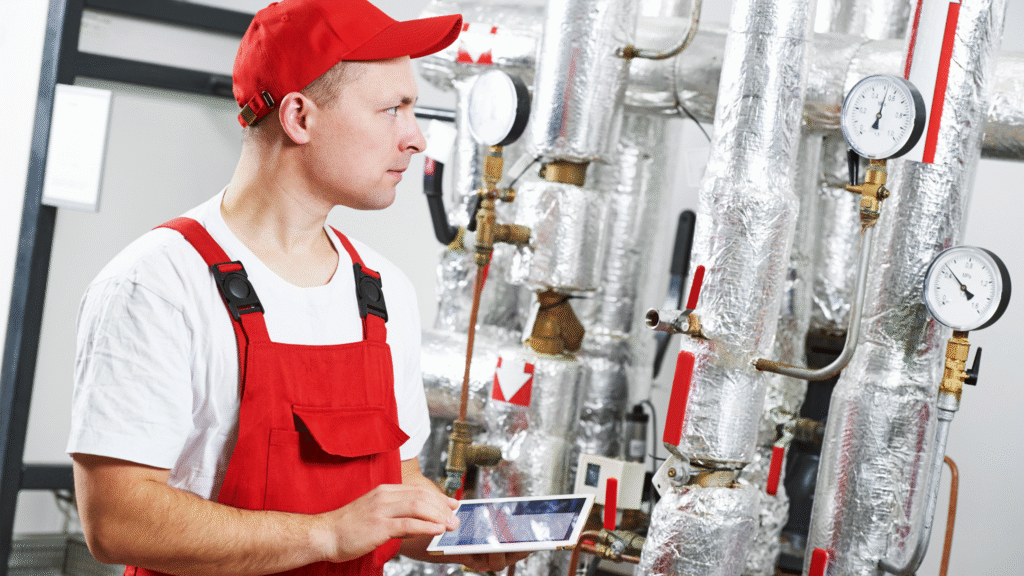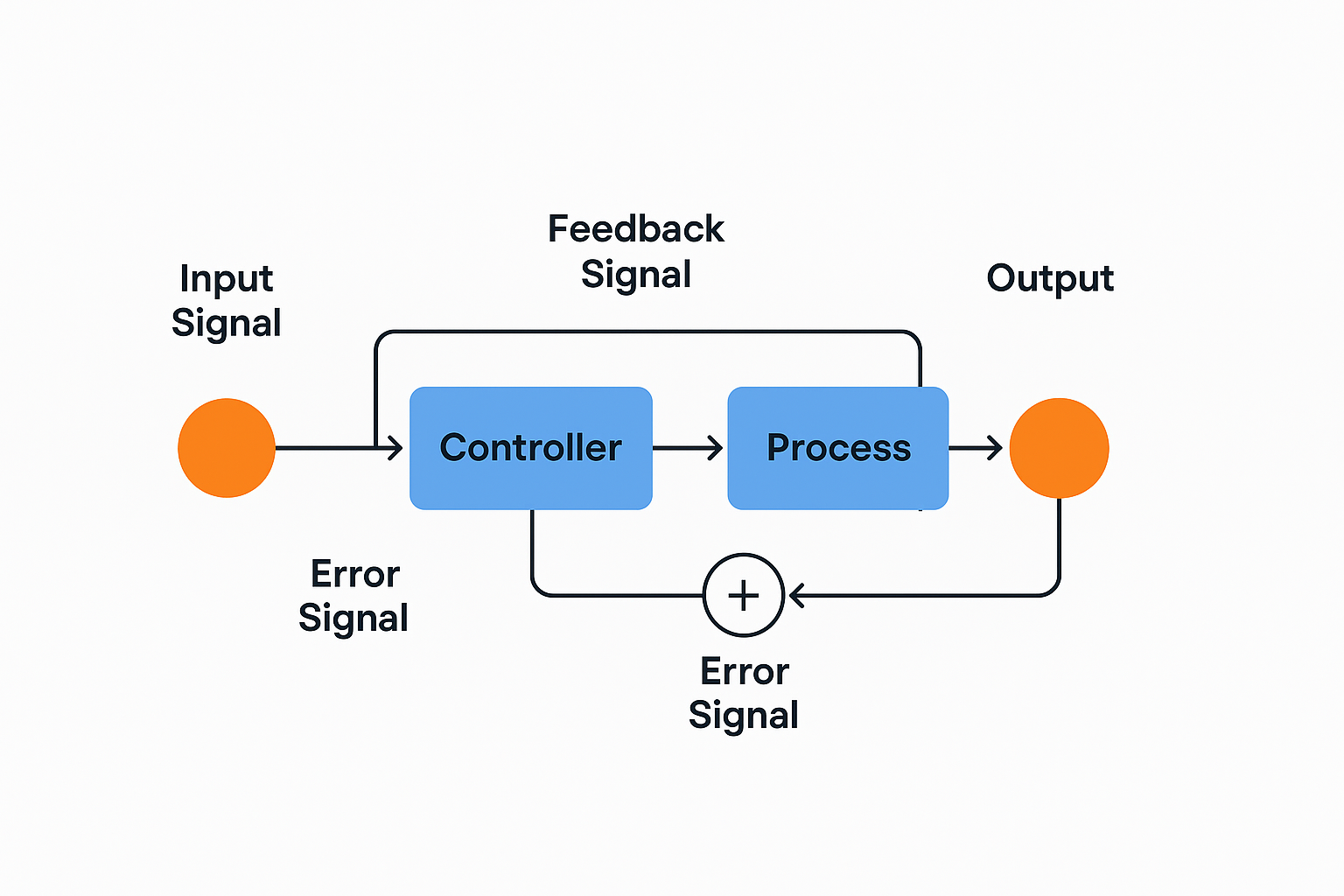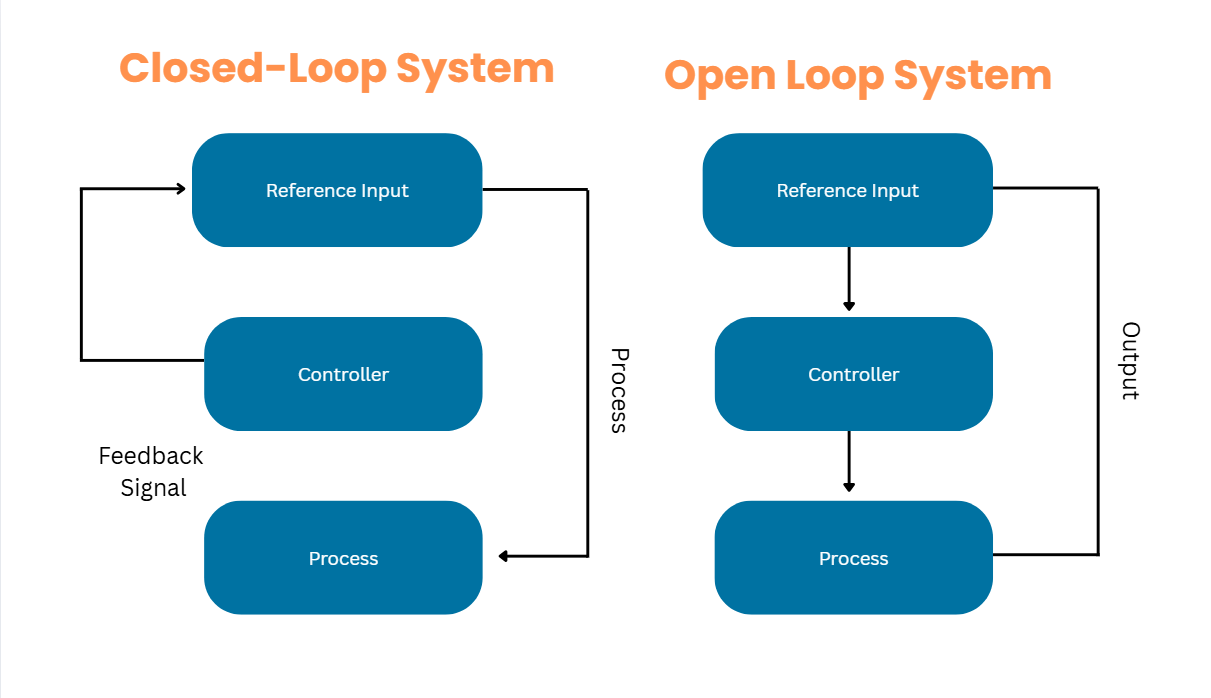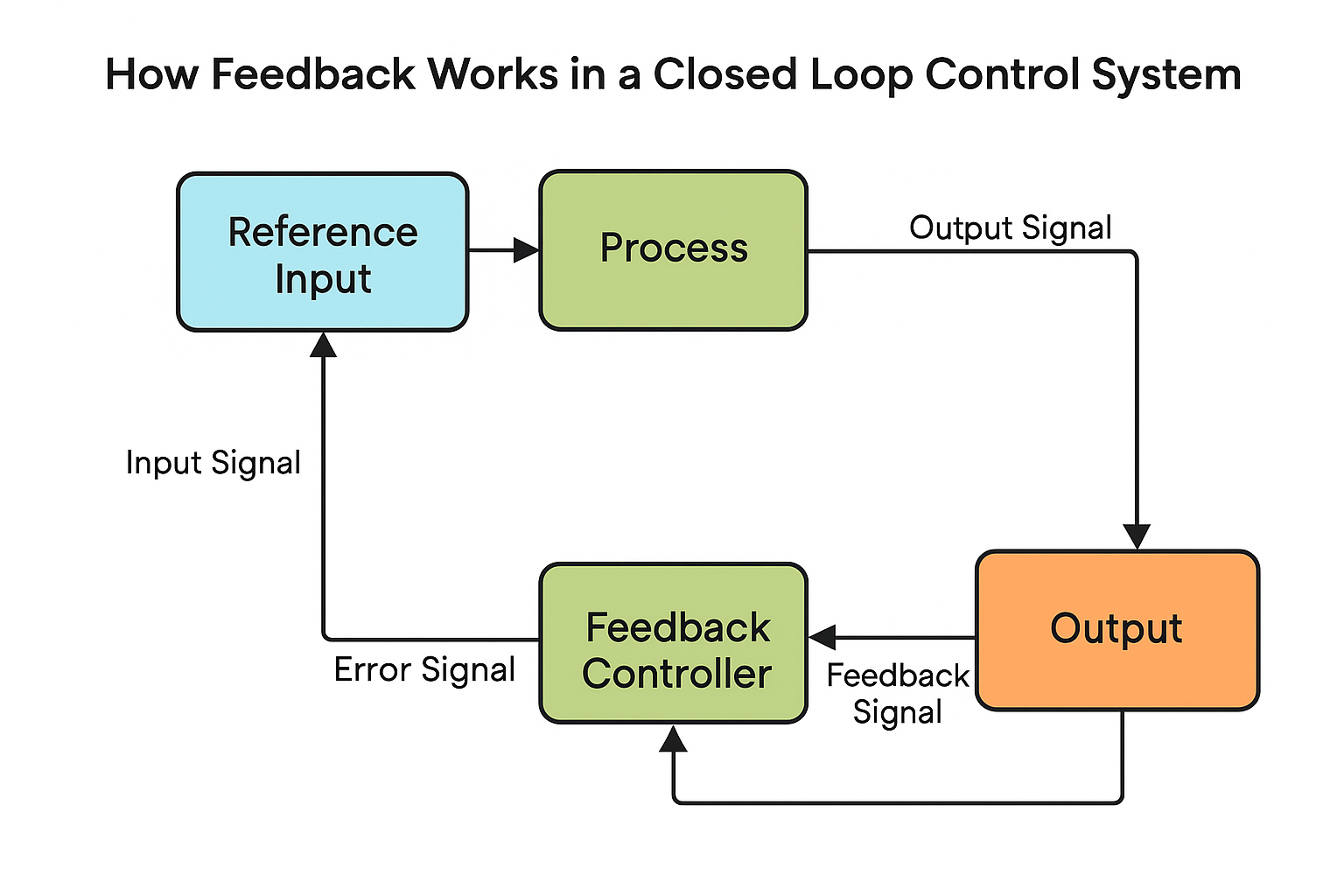What Is a Closed Loop System and How Does It Work?
In modern industrial settings, control systems ensure that processes run smoothly, efficiently, and safely. One of the most important and widely used types is the closed loop system, a design that continuously monitors its own output and makes adjustments to stay on target. But what is a closed loop system, and why does it matter?
Unlike simpler open systems, a closed loop incorporates feedback to automatically regulate variables like temperature, flow rate, or pressure. This feedback loop allows the system to compare the actual output to the desired condition and make real-time corrections without human intervention. From HVAC systems and water treatment loops to cruise control and manufacturing automation, closed loop systems help reduce errors, improve consistency, and enable optimal performance.
For engineers and operators managing critical infrastructure, understanding how these systems work (and how to keep them functioning properly) is essential to achieving long-term reliability, sustainability, and compliance.

Understanding Closed Loop Systems
A closed loop system is a type of control system that continuously monitors its output and automatically adjusts its operation to match a target condition. At its core, a closed loop incorporates a feedback loop, allowing it to self-regulate based on real-time data.
These systems typically include four key components:
- Input signal: the desired value or set point that the system aims to achieve.
- Controller: the component that processes feedback and determines the control action.
- Process: the operation or system function being managed.
- Feedback signal: the measurement of the actual output that is sent back to the controller for comparison.

When the actual output deviates from the set point, the system generates an error signal, which represents the difference between the two. The controller then responds with a control signal, modifying system behavior until the error is minimized or eliminated. This closed loop control method enables greater stability, accuracy, and adaptability in dynamic conditions.
By using feedback, a closed loop feedback system can compensate for disturbances, such as fluctuations in load, environmental changes, or operational wear. These systems are particularly beneficial when precise outcomes are needed or when external variables may otherwise affect the desired output.
Closed Loop vs Open Loop Systems
To understand the value of a closed loop system, it helps to compare it to its counterpart: the open loop system. Both are types of control systems, but they differ significantly in how they operate and respond to changing conditions.

An open loop control system operates solely based on the reference input. It performs a predetermined sequence of actions without measuring the actual output or comparing it to the desired output. Since there is no feedback path, the system cannot make corrections on its own. A common simple example of this is a basic washing machine cycle, which runs for a set time regardless of how clean the clothes are.
In contrast, a closed loop system monitors the output and uses the feedback signal to evaluate whether the system is reaching the desired output condition. If there is a discrepancy, the system generates an error signal, triggering a corrective control signal. This continuous adjustment allows for more accurate control, reduced error, and greater system efficiency.
Control loops that incorporate feedback are better suited to complex or variable environments. For example, a heating system with a temperature sensor will automatically adjust heat output to maintain the desired temperature, while an open loop version would deliver heat at a fixed rate regardless of room conditions.
Bottomline: Although open loop designs are simpler and less expensive, they require more human intervention and are prone to inefficiencies when disturbances occur. Closed loop control systems, by contrast, are more reliable for applications requiring consistency, adaptability, and long-term optimal performance.
How Feedback Works in a Closed Loop Control System
At the heart of a closed loop control system is the feedback loop. It refers to a mechanism that enables the system to self-correct and maintain the desired output. This loop relies on constant comparison between what the system is doing and what it is supposed to do.

The process begins with a reference input, which defines the set point or desired response. This input represents the ideal state the system should automatically achieve, such as maintaining a room at 72°F. As the system operates, it produces an output signal — the actual result of its actions.
A feedback controller then receives the actual value (often via a sensor) and compares it to the set point. The difference between the two is the error signal, which serves as the basis for determining the corrective control signal. The controller uses this signal to adjust inputs to the process, such as increasing or decreasing heat, pressure, or flow rate.
This constant monitoring and adjustment cycle allows the system to reduce errors, even when external disturbances occur. For instance, in a climate-controlled room, if the current air temperature drops below the set point due to an open door, the temperature sensor sends that information back through the loop, triggering an increase in heating.
Closed loop systems typically use negative feedback, where corrective action is applied in the opposite direction of the error. This helps stabilize the system. Positive feedback, while less common, can amplify the system response and is used selectively in certain specialized applications.
Read more on our blog: Understanding Total Dissolved Solids (TDS) in Water Treatment Systems
Practical Examples of Closed Loop Systems
Closed loop systems are found in both everyday tools and highly specialized industrial processes. Here are a few key examples that illustrate how these systems use feedback to maintain control and achieve consistent outcomes:
- Cruise Control: In a vehicle, the driver sets a desired speed. Sensors monitor the actual speed, and the system continuously adjusts throttle to keep the car moving at the set speed, even when terrain or drag changes.
- Heating Systems: A thermostat measures a residential HVAC unit that uses a room temperature and compare it to the set point. When the actual temperature falls below or rises above the desired level, the system activates heating or cooling to correct the difference. This type of temperaturesensor-based feedback ensures energy-efficient operation and occupant comfort.
- Automatic Electric Irons: These electronic devices regulate their own heating elements by measuring internal temperature and cycling power to maintain a steady heat level. This prevents fabric scorching and promotes safety.
In industrial settings, closed loop systems play an essential role in water and thermal management. For example, a cooling system in a manufacturing facility may use sensors to monitor water temperature and pressure. When conditions deviate from optimal ranges, the system responds by adjusting pump speed or chemical dosing, maintaining the desired output condition without operator input.
A prime example is Kaiser Permanente’s Harbor City facility, where EAI implemented a closed loop cooling tower solution using radial deionization to reduce total dissolved solids (TDS) in make-up water. This site-specific system enabled the hospital to increase cycles of concentration, reduce water and chemical use, and protect heat transfer function — all while maintaining consistent performance and minimizing downtime.
Read the full case study on Kaiser Permanente – Harbor City, CA for further information.
Benefits of Closed Loop Systems in Industrial Applications
In complex industrial environments, maintaining stable operating conditions is critical. Closed loop systems help meet this need by offering precise, responsive control that adjusts in real time. This delivers several key benefits:
1. Accurate Control of System Parameters
Because a closed loop feedback system compares the actual output to the set point, it can quickly correct deviations. This results in tighter control over process variables such as temperature, pressure, flow rate, and chemical concentration.
2. Improved Operational Efficiency
By continuously adjusting to real-world conditions, closed loop systems can operate efficiently without wasting energy, water, or chemicals. They respond only when necessary, which extends equipment life and reduces unnecessary cycling.
3. Reduced Human Interaction
A well-designed closed loop control requires minimal input control. Once the system is configured, it runs automatically, making necessary adjustments as conditions change. This lowers the burden on facility staff and reduces the risk of manual errors.
4. Lower Error Rates
With constant feedback, closed loop systems are better at maintaining the desired output level even when noise interference or environmental factors introduce variability. They continuously work to reduce errors before they affect the larger system.
5. Adaptability for Complex Systems
In industries with many interdependent components (nuclear power plants, food processing, or large-scale HVAC) closed loop systems are ideal. Their ability to adjust to system parameters and stabilize performance makes them essential in environments where precision is non-negotiable.
Common Challenges and Limitations
While closed loop systems offer significant advantages, they also present challenges that require attention during design and operation:
- Noise interference can distort the feedback signal, causing the system to react to false inputs. This often occurs when electrical noise or environmental variability affects sensor data.
- Sensor lag or inaccuracy can lead to poor control decisions. For example, if a temperature sensor reports a delayed or incorrect value, the system may overcompensate, overshoot the desired output, or become unstable.
- Complex system interactions can create conflicts between interconnected control loops. Without proper coordination, these subsystems may interfere with one another, preventing the system from achieving the overall desired state.
- Maintenance requirements remain. Even though closed loop control systems reduce the need for human interaction during normal operation, they still depend on accurate tuning, calibration, and periodic performance checks. Ignoring these needs can degrade long-term efficiency.
In applications with steady, predictable loads and minimal risk, an open loop system may still be the preferred solution. Selecting the right control approach depends on how critical accuracy, adaptability, and responsiveness are to your operations.
EAI’s Expertise in Closed Loop Water Treatment
At EAI, we understand that a properly designed closed loop system is essential to maintaining efficiency, reducing corrosion, and extending equipment life. This works especially in environments where heating and cooling play a critical role in production or facility management.
Our team of Certified Water Technologists and field engineers brings decades of experience to the maintenance and optimization of closed loop water heating and cooling systems. We begin by evaluating your system’s role within the facility, analyzing water chemistry, materials compatibility, and operational flow to develop a custom preventative maintenance plan.
Key service features include:
- Low dose chemical treatment programs tailored to the exact needs of your loop. These formulations are designed to reduce water usage, prevent scaling, and minimize ecological impact. We balance nitrite- and molybdate-based blends for corrosion inhibition and biological control.
- Onsite and remote monitoring support. We conduct regular water analysis, calibrate conductivity sensors, and program system controllers to maintain stable operation. Through remote monitoring, we can help prevent pressure drops, temperature inconsistencies, and other early signs of fouling or underperformance.
- System troubleshooting and protection. From process chillers to HVAC loops, we provide support for issues such as pressure loss, pH imbalance, and microbial activity. Our goal is to ensure each system meets its desired output condition while minimizing downtime and chemical loss.
Even though closed loop systems are self-contained, they are not immune to contamination, oxygen ingress, or biofilm formation. EAI’s chemical programs, remote support, and loop system analysis help facilities maintain control over their system performance with minimal intervention.
Learn more about our services here: EAI Closed Loop Water Treatment
Consult the Closed Loop Experts at EAI
If your facility relies on a closed loop system for heating, cooling, or process control, consistent performance begins with the right treatment and monitoring strategy. EAI offers expert analysis, customized chemical programs, and long-term service plans to help protect your systems from fouling, corrosion, and costly inefficiencies.
Start with a water and system performance review to identify opportunities for improvement.
Schedule your advanced water treatment solution consultation.
Frequently Asked Questions (FAQs)
1. What’s the difference between an open loop and a closed loop system?
An open loop system operates without feedback and does not self-correct, while a closed loop system uses feedback to compare actual output with the set point and adjusts automatically.
2. What industries rely on closed loop fully automatic control systems?
Closed loop systems are common in HVAC, water treatment, manufacturing, medical devices, and nuclear power plants due to their accuracy and adaptability.
3. How does a closed loop reduce errors?
By constantly comparing output with the desired state and adjusting via the control signal, these systems correct deviations in real time and reduce errors.
4. Can closed loop systems operate without human intervention?
Yes, most closed loop systems are designed to run with minimal human interaction once set up, adjusting automatically to maintain performance.
5. What role does feedback play in such systems?
Feedback systems allow the controller to evaluate the actual condition and make corrections, enabling consistent, stable results despite changing inputs or loads.